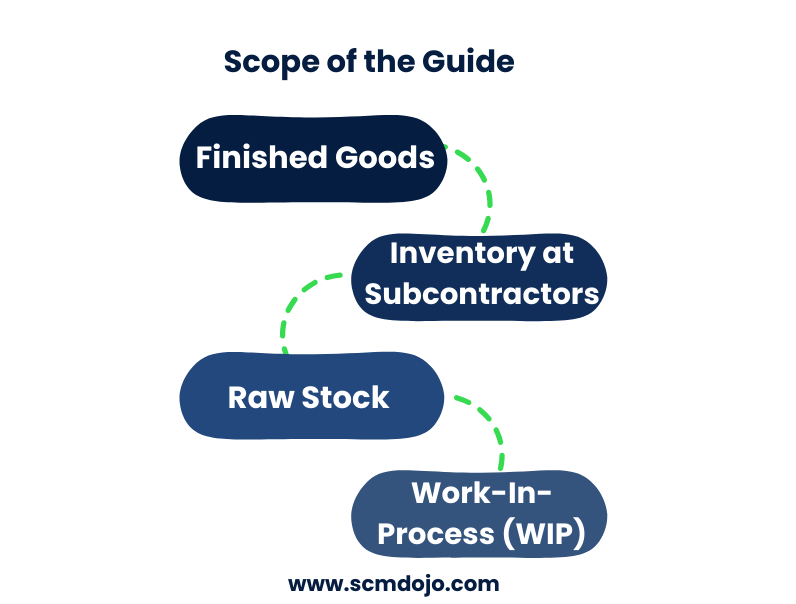Excess and Obsolete Inventory Policy Guide
Are you struggling with excess and obsolete inventory that ties up working capital and clutters your shelves? This Excess and Obsolete Inventory Policy provides a complete framework for financial controllers, supply chain managers, and CFOs to manage inventory write-offs, reduce stock risks, and align with global best practices. This policy guide outlines how to establish

1 Files
82 Purchases
Unlimited access, anywhere, anytime
Upgrade to Student or Pro plan to avail more discounts and perks
Files
- Excess and Obsolete Inventory Policy Guide621.66 KB
Why You Need an Excess and Obsolete Inventory Policy
Companies often face losses due to damage, deterioration, obsolescence, or shifts in customer demand. Without a clear inventory policy, these issues create hidden costs and inaccurate reporting.
An Excess and Obsolete (E&O) Policy helps organizations:
-
Accurately record reserves for excess and obsolete inventory.
-
Standardize procedures across business units and divisions.
-
Shift from reactive inventory management to a proactive, preventive approach.
-
Improve cash flow and profitability by reducing waste.
Advantages of an Excess and Obsolete Inventory Policy
This 12-page, fully customizable inventory policy template helps you establish a clear and consistent approach to managing surplus and obsolete stock. Key benefits include:
1. How an Excess and Obsolete Inventory Policy Improves Inventory Reserves Evaluation
Perform quarterly reviews to ensure accurate write-offs and provisions.
2. Comprehensive Planning Strategies
Apply proven methods to maintain accuracy across all inventory levels.
3. Coverage Across All Inventory Categories
From raw stock to finished goods and work-in-process (WIP), the policy applies to every stage.
4. Flexible Formats
Available in both Microsoft Word and PDF, making it easy to edit and roll out across your organization.
5. Empowering Finance & Supply Chain Teams
Gives financial controllers and supply chain managers confidence when setting reserves for obsolete and excess stock.
6. Alignment with Standard Policies
Ensures all divisions and manufacturing units follow consistent inventory guidelines.
7. Proactive Inventory Management
Moves your business away from reactive loss recognition toward a structured, forward-looking approach.
Scope of the Excess & Obsolete Inventory Policy
The policy guide covers all key inventory areas, including:
-
Finished Goods
-
Raw Materials
-
Work-in-Process (WIP)
-
Inventory held at Subcontractors

Why an Excess and Obsolete Inventory Policy Matters
Without a standardized excess and obsolete inventory management process, many businesses rely on ad hoc or reactive practices. This guide introduces a proactive approach that:
-
Identifies root causes of inventory issues.
-
Provides accountability for continuous improvement.
-
Reduces the financial impact of write-offs.
Who Should Use This Excess and Obsolete Inventory Policy?
This Excess and Obsolete Inventory Policy is designed for:
-
Financial Controllers managing allowance accounts.
-
Supply Chain Managers responsible for inventory accuracy.
-
CFOs and Executives seeking alignment across divisions.
-
Materials Management Professionals improving efficiency.
Formats & Accessibility
-
Length: 12 pages (2,696 words)
-
Formats: Word & PDF for easy customization
-
Accessibility: Available worldwide via PayPal or Gumroad
Frequently Asked Questions (FAQs)
Q: What is an Excess and Obsolete Inventory Policy?
A: It’s a formal document that defines how to identify, account for, and manage surplus or obsolete stock through reserves and write-offs.
Q: Why is it important for finance teams?
A: It ensures accurate balance sheets and prevents overstated assets caused by unsellable inventory.
Q: Does this policy apply only to finished goods?
A: No, it covers raw stock, WIP, subcontractor inventory, and finished goods.
Q: Can this policy template be customized?
A: Yes, it comes in Word and PDF formats for easy editing.


